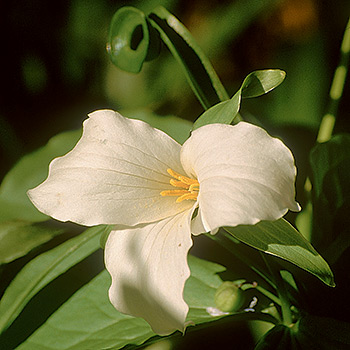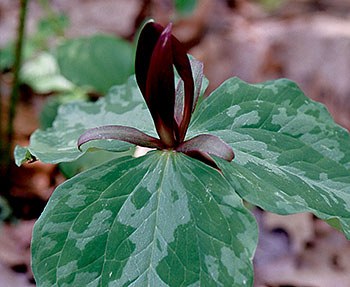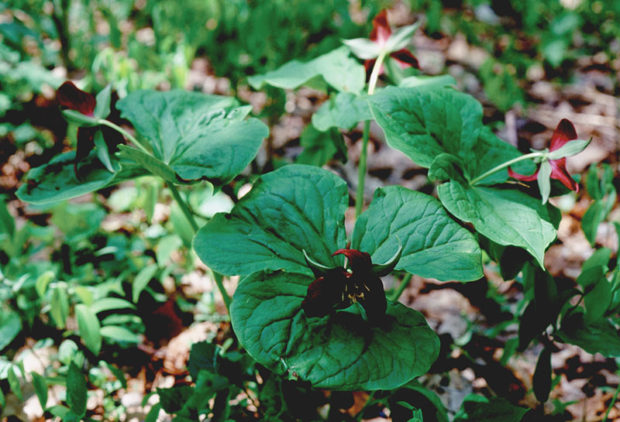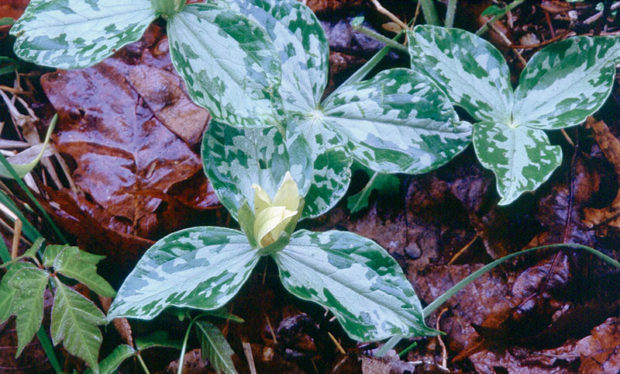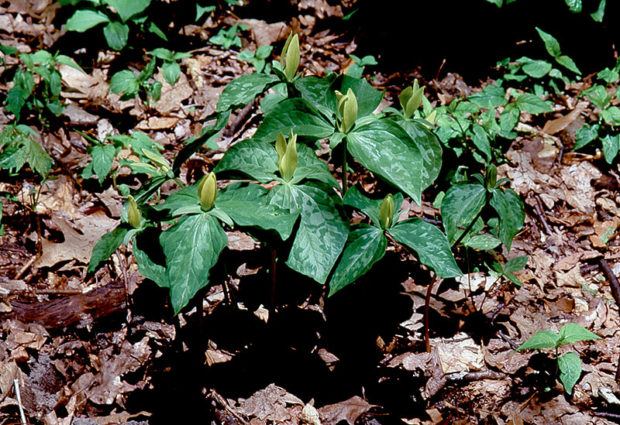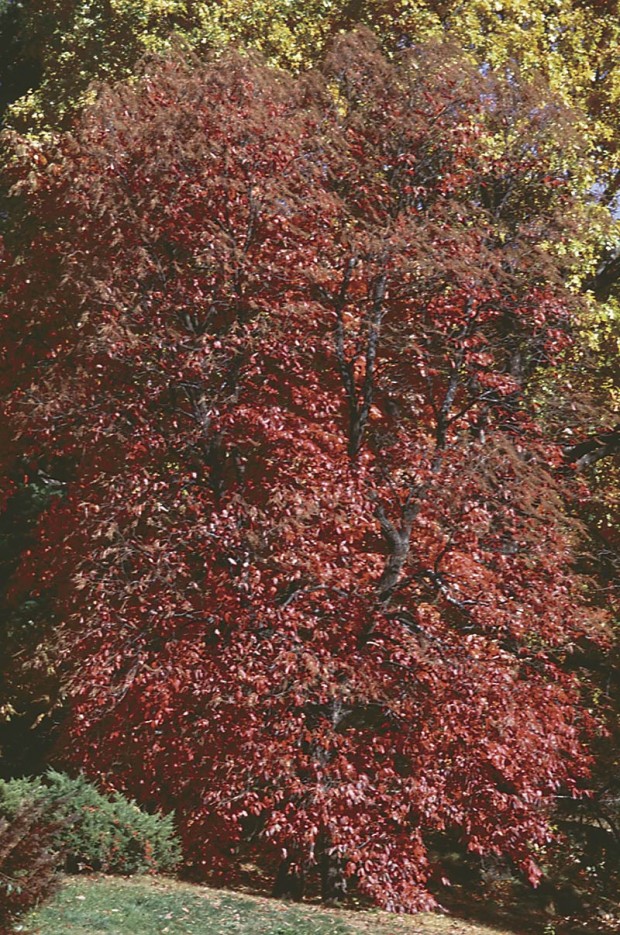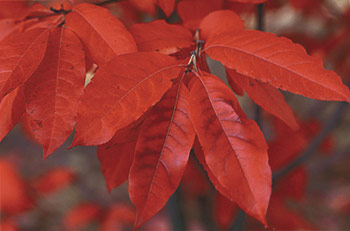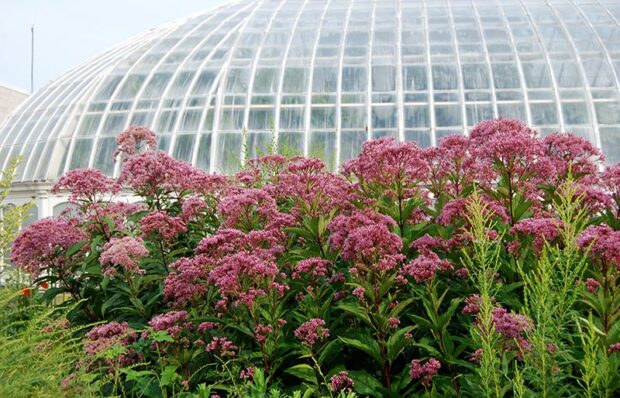
As the hot days of summer succumb to the cool, crisp season that is fall, many gardeners choose to take advantage of this great weather for outdoor projects. Of course mums and black-eyed Susans will dominate many landscapes each September, but the huge palette of late performers is sorely overlooked and certainly deserves closer examination. Although there are many fall-blooming plants available, most remain very underused. Far fewer gardeners visit garden centers in the fall, and those that do often just look at the mums, pansies, and spring-blooming bulbs.
Great varieties of asters, anemones, pink turtleheads, toad lilies, sedum, and ornamental grasses are loaded with colorful flowers or beautifully textured foliage. Joe Pye weed (Eupatorium maculatum, syn. Eutrochium maculatum) adds large, stately flowers, a robust growth habit, and durability to your fall plant choices.
Joe Pye weed is native to North America, but is more commonly used in the finest gardens of Europe. In more dry and less fertile conditions, plants may only grow to 4 or 5 feet, but moist, fertile soil will produce plants up to 8 feet tall. Its pinkish purple flowers are produced in clusters that form larger clusters reaching up to 18 inches across. Large green leaves are attached to rich burgundy stems, resulting in a striking contrast of colors on each stalk.
How to grow
Plants prefer full or partial sun, where the stems grow strong and rarely require staking. If extensive soil preparation isn’t your cup of tea, Joe Pye weed may be the plant for you. It thrives in the moist, heavy soil conditions that are typical in mostly clay Michigan gardens. It is long-lived and extremely durable. In fact, a specimen in our display garden was once mistaken for a weed and almost completely removed. It grew back the following year and was covered with the large flowers that butterflies and bees find irresistible. Joe Pye weed spreads slowly but may eventually overstep its boundaries. This can be controlled in spring by dividing the whole clump or simply removing outside sections of the plant’s crown.
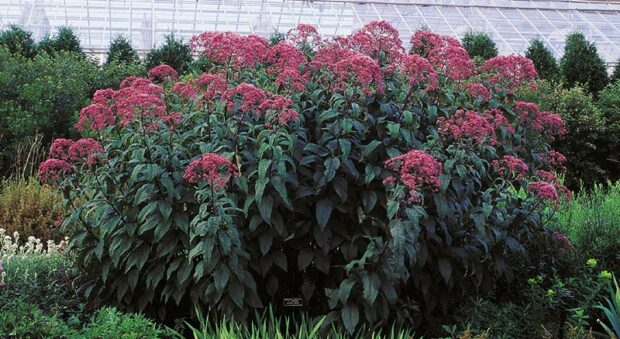
Companion plants
Joe Pye weed’s massive size makes it perfect to use in the back of a border. Combine it with other large, late bloomers that have contrasting colors, flower forms, and foliage. Try the blue, pink, or purple flowers of asters, especially the taller varieties like ‘Alma Potschke,’ ‘Patricia Ballard,’ and ‘Sailor Boy.’ The huge flowers of hardy hibiscus are available in reds, pinks, or white. Some rudbeckia varieties can also provide equally large plants and brightly contrasting yellow or gold flowers. For a great foliage contrast, try the silver leaves and lavender-blue flowers of Russian sage (Perovskia atriplicifolia). Position the massive architectural foliage of plume poppy (Macleaya cordata) next to Joe Pye weed for a great combination of flowers and foliage. Don’t forget ornamental grasses—some of the larger types like switchgrass, feather reed grass, or maiden grass would provide contrasting foliage and winter interest.
In your front yard, where tidy and multi-seasonal plants are desired, Joe Pye weed may have a place. Its large size and controllable vigor work well in combination with common shrubs. Its flowers fill the need for a sizable fall-blooming plant where only rose of Sharon, summersweet (Clethra), butterfly bush, and blue mist shrub (Caryopteris) are common. Other tidy and multi-seasonal perennials for the front yard include upright sedum, daylilies, hostas, ornamental grasses, and of course, groundcovers.
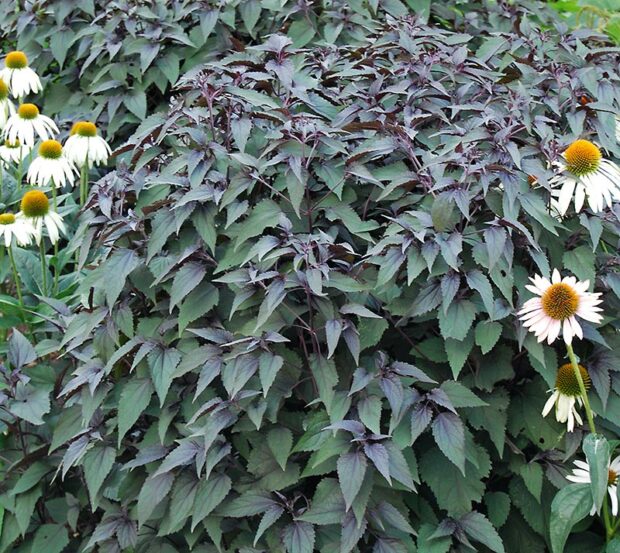
Additional species
For a sturdier, more compact Joe Pye weed, the variety of choice is ‘Gateway,’ topping out at 5 to 6 feet in height. Plus, there are a few other species that are worth mentioning:
The coastal plain Joe Pye weed (Eutrochium dubium) has given us two slightly smaller introductions: ‘Little Joe’ and ‘Baby Joe’, both reaching 4-1/2 to 5 feet tall.
Hardy ageratum (Eupatorium coelestinum, syn. Conoclinium coelestinum) has blue, ageratum-like flowers on 2- to 3-foot tall plants that tend to spread.
Chocolate snakeroot (Eupatorium rugosum ‘Chocolate’, syn. Ageratina altissima ‘Chocolate’) has insignificant white flowers, but dark bronzy-purple leaves on 3- to 4-foot tall plants. ‘Chocolate’ will tolerate some shade. This foliage is incredible when contrasted with other gold, red, silver, or even green leaves.
‘Pink Frost’ (Eupatorium fortunei ‘Pink Frost’) boasts variegated leaves with white edges and pink flowers that pop when contrasted with the foliage.
These varieties, like Joe Pye weed, will tolerate moist, heavy soil, and prefer full or partial sun.

As fall approaches, remember that the gardening season is far from over. Gardening becomes even more enjoyable and plants tolerate being moved more easily when temperatures are cooler. Take a moment to evaluate your landscape and see where late season interest is needed. Perhaps try Joe Pye weed to add color, height, texture, and architectural interest to your fall garden.
George Papadelis is the owner of Telly’s Greenhouse in Troy and Shelby Township, MI.
Joe Pye weed
Botanical name: Eupatorium maculatum (u-puh-TOR-ee-um mack-u-LAY-tum); syn. Eutrochium maculatum (u-TRO-kee-um)
Plant type: Perennial
Plant size: 4-8 feet tall; 2-4 feet wide
Habit: Upright
Hardiness: Zone 3 or 4
Flower color: Pinkish purple
Flower size: 6- to 18-inch wide clusters
Bloom period: Late summer and fall
Leaf color: Green, with burgundy stems
Leaf size: 8-12 inches long; lance-shaped
Light: Full to partial sun
Soil: Well-drained, moist soil. Drier, less fertile soil will restrict growth.
Uses: Back of the border, architectural plant
Companion plants: Perennials: upright sedums, ornamental grasses, rudbeckia, Russian sage, plume poppy, tall asters. Shrubs: rose of Sharon, summersweet, butterfly bush, blue mist shrub.
Remarks: Tolerates heavy, clay soil. Size can be controlled with late spring pruning. Long-lived and durable. ‘Gateway’ is more compact in habit.
ELSEWHERE: More photos of Joe Pye Weed (Eutrochium maculatum)

